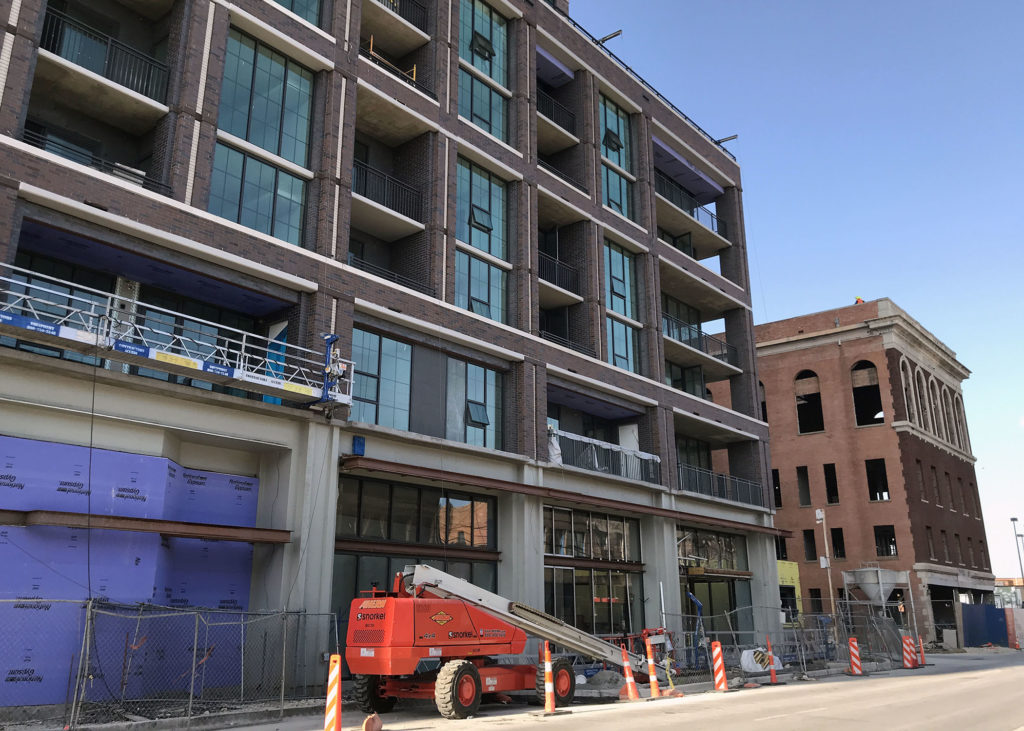Over the past several months, Opportunity Zones (OZs) have been a hot topic for economic developers and investors across the country. A provision of the Tax Cuts and Jobs Act passed in December 2017, OZs aim to incentivize private investment in the nation’s most economically distressed communities. As the largest federal economic development investment in over a decade, OZs originally excited economic developers because of their promise to deliver community benefits, but as the market has unfolded, OZs have instead been met with criticism.
What are Opportunity Zones?
How do OZs work? A variety of tax benefits are offered to investors in order to mitigate risks for supporting development and economic growth in communities that typically do not have access to stable financial capital. Investors can receive tax benefits by investing in over 8,700 OZ census tracts that were designated by governors in spring of 2018. Opportunity Funds must be set up by corporations or partnerships in order to make investments in OZs. At least 90 percent of an Opportunity Fund’s assets must be held in OZ properties or investments.
According to the Economic Innovation Group (EIG), OZs offer three primary benefits to investors:
- A temporary tax deferral on capital gains invested in an Opportunity Fund that makes equity investments in designated low-income communities,
- A step-up in basis on the original investment in Opportunity Funds held for five or seven years, and
- Exclusion from capital gains tax liability for new Opportunity Fund investments held for 10 or more years.
There is no limit on the amount of capital gains that can be invested in an Opportunity Fund. In 2018, EIG estimated that over $6 trillion in unrealized individual and corporate capital gains could be eligible for investment in OZs, though other estimates suggest the market may more realistically be closer to $100 billion. Novogradac, a tax professional services firm, announced that over $6.7 billion has been invested in Opportunity Funds as of December 2019. It is important to note that, while significant capital has been invested into funds, this capital has not necessarily been deployed in OZs, as specific projects are still emerging.
Overall, OZs are concentrated in distressed communities with average poverty rates of 28.9 percent—well above the national poverty rate of 14.6 percent. However, criticisms about the designation of these zones have emerged. Seven percent of the 8,700 zones have incomes above the national median, and 200 zones are adjacent to distressed areas but are not themselves distressed. Additionally, critics point out that much of the funds flowing into OZs have thus far been in these non-distressed areas, many of which were already experiencing investment and growth before OZs appeared on the scene. Critics are also questioning the efficacy of the zones as instruments to move revitalization capital into distressed areas. Many of the incoming investments are not concentrated on providing increased opportunity to the surrounding community. Instead, they are luxury real estate projects advantaging the tax deferral benefits of the zone. However, some experts have suggested that low-hanging fruit are naturally the first to be exploited after implementation of a new policy. As the low-risk, high-reward opportunities are exhausted and the OZ market and regulatory guidelines develop, investors seeking the tax deferral benefits will broaden their search to other more distressed zones.
Marrying Investment and Impact in OZs
Economic growth and community inclusion are not mutually exclusive. For far too long, economic developers have focused on growth but now on how that growth is distributed among different residents. The push to attract businesses and market communities alone has not resulted in benefits for all groups, and economic development organizations (EDOs) now face more pressure than ever to develop other strategies that deliver broader prosperity to their constituents. Research shows that expanding opportunity and inclusion for all also leads to greater economic growth. An investment in educational opportunities for marginalized communities is an investment in your city’s or region’s workforce. Providing access to affordable housing, health food, and other social services creates stability in the lives of low-income residents, thereby allowing them to more fully participate in the economy and in civic life. Joseph Parilla, a Fellow at Brookings, states, “…regions that extend opportunity across all people and communities are building a diversified investment portfolio for their economic future.” EDOs can no longer ignore outcomes for low- and moderate-income residents. Instead, they should view community inclusion as a prerequisite for sustainable economic growth and prosperity.
To view investment opportunities in OZs through the dual lenses of economic growth and community inclusion, developers will need to look beyond traditional economic metrics used to assess risk and return.
- MasterCard’s Center for Inclusive Growth has developed a resource compiling public and proprietary data on all 8,700 OZs to create an Inclusive Growth Score for each zone. The Score, based on factors influencing place (occupancy, affordability, internet access, etc.), economy (business growth, loan activity, labor indicators), and community (income, inequality, early education, health insurance coverage, etc.), compares each zone to the country or state and also compares differences in urban and rural places. These types of non-traditional metrics can help to highlight the needs and strengths of communities and to reveal what types of investments would be best suited to encourage inclusive economic growth.
- The Urban Institute has also developed an OZ Community Impact Assessment Tool, where stakeholders, such as OZ project sponsors, investors, public entities, or other organizations, can input information about an existing or potential project in an OZ and receive a score reflecting how likely the project is to deliver community and social benefits. The Urban Institute team based their assessment on the guiding principles of mobility from poverty and advancing racial equity, in addition to information gathered on other social impact tools and expert interviews. Stakeholders are asked to select a project type (an operating business, a residential, commercial, or industrial development, or a combination of these) and answer questions across seven impact areas, including community goals and priorities, access to quality jobs, community wealth-building, affordable housing, and environment, among others. Stakeholders will then receive a score indicating the alignment and benefit or detriment the project is likely to have on the surrounding community. While this tool is limited by the accuracy and truthfulness of the inputs and is not comprehensive (e.g., it does not address feasibility concerns), it provides key information to stakeholders concerning the economic inclusivity and broader impacts of an OZ project.
Bridging the Gap between Investors and Communities in Alabama
Investors and economic developers should look to leading examples of organizations seeking to marry growth with inclusion. Opportunity Alabama (OPAL) is a nonprofit initiative bringing investors, opportunities, communities, and key institutional supporters together to generate real returns while improving economic vitality and quality of life. OPAL was created in 2018 to develop a statewide response and strategy for OZs by serving four key stakeholder groups: communities, project sponsors, investors, and other third-party supporters. The organization helps to attract investments from national and local funders, engage local communities in identifying their needs and desired developments, and create a statewide infrastructure to connect parties interested in OZs. OPAL has already provided technical assistance or access to capital that has lead to nine closed deals and over $80 million in new investment into Alabama’s distressed places. They are tracking over 300 community-centric potential OZ investments, two dozen of which are in active diligence with potential investors at present.
Alex Flachsbart, President & CEO of OPAL, believes community engagement is vital to marrying impact and investment. “The first step is to ask the community what they need and engage residents in identifying development priorities.” Flachsbart cited the City of Birmingham’s Inclusive Growth Partnership and its Community Investment Board as leading examples of how municipalities can meaningfully engage residents and communities in developing a vision for OZs. The BIG Partnership is a public-private initiative that brings together investors and Birmingham’s residents to drive capital towards high-impact, community-focused projects. Guided by a Community Investment Board, the BIG Partnership engages community members and advises investors and the City on neighborhoods’ needs.
Shifting the Narrative to Focus on Growth and Inclusion
Without formal regulations requiring impact-oriented reporting or accountability, the burden is on cities and regional entities to ensure that investments in their OZs result in benefits to their communities. Shifting the narrative to focus on both economic growth and community inclusion is an important step to ensure that OZs deliver on their potential and promise to strengthen the country’s disadvantaged communities. Cities and local organizations can take the lead by identifying community priorities and working closely with investors to move capital toward projects that benefit residents and provide comfortable ROIs through long-term economic growth.
For more information on how your community can benefit from Opportunity Zones, contact TIP Strategies at contact@tipstrategies.com.
Image courtesy City of Dallas



